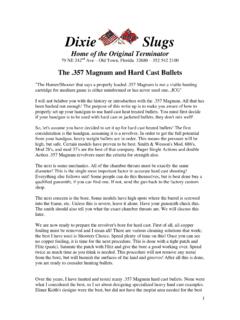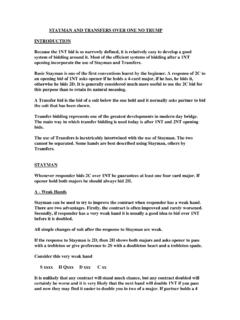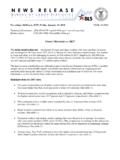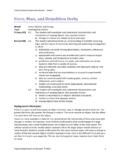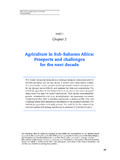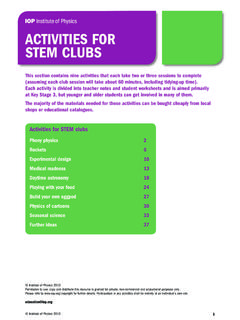Transcription of Bullets and Game: What Really Happens - DixieSlugs
1 Dixie Slugs force Factor Bullets and Game: What Really Happens If there is anything I have learned over the past fifty years of big game hunting, it is that there are no two killing wounds on animals that are the same. There are just too many variables including, angle of bullet s path through the animal, mental condition of the animal, age of the animal, and the bullet itself (weight, velocity, sectional density, and construction.). There are two basic schools of thought on the desired results the shooter wants from his bullet. One is Energy Deposit and the other is Momentum. Modern jacketed bullet manufacturers attempt to combine the two, with varying success. Let s explore this in general. Energy Deposit: The theory is that a projectile by having weight and velocity, the Kinetic Energy formula applies.
2 This formula was developed in steam engine days to relate the power of the engine s work ability (piston size/steam pressure) to lift weight a prescribed height against gravity. It will be up to you, my readers, to decide the validity of this formula to the terminal performance a bullet. The adherents to this believe that as a jacketed bullet penetrates (and expands) and decelerates in tissue, it transfers Kinetic Energy (in foot pounds) to the animal. This transfer causes first a Primary Cavity and then a Secondary Cavity, which called by many the Permanent Wound Channel (PWC). Since water in the animal s tissue (up to 90% by weight) cannot be compressed, therefore it is violently displaced causing the Primary Cavity. It is thought that as this Primary Cavity expands, in milli-seconds, it causes a hydrostatic energy wave to move through all adjoining tissue.
3 This hydrostatic energy wave is supposed to cause a paralyzing Nerve Shock and cause a disruption of the faculties. This, for the lack of a better way, is used to describe the Hydrostatic Energy involved and this is the way Paper Ballistics on Bullets are described today. Momentum: The adherents of this theory push the belief that a non-expanding bullet must penetrate very deeply, causing a Permanent Wound Channel (PWC), and destroy critical nerve centers, the brain, and vital organs that an expanding bullet is unable to reach. This theory has merit, as no matter what the mass of the animal is, if its brain or spine is destroyed it s all over . The African hunter of big game prescribes to this school of thought. The PWC destroys tissue, thereby causing hemorrhage.
4 The combined area of this PWC is directly related to Bleed Down, which deprives the animal s brain of oxygen. The shape of the nose, and its construction, is most important for deep penetration. To keep the bullet from deviating form its path, a round nose is suggested as best. Pressure Vs Energy: Although many shooters think they are the same, they are not. Physics Definition Pressure is force applied over a surface area, measured as force per unit of area. Physics Definition - Kinetic Energy: That a physical system is capable of doing in changing from its actual state to a specified reference state. The total including , in general, contributions of potential energy, kinetic energy, and rest energy . Another Important Discovery: Veral Smith, while testing various bullet shapes, stumbled onto one of the most important facts concerning bullet meplats.
5 Using the Keith #429421 SWC bullet, he painted the meplat and front driving band with marker pen. The Bullets were then fired into water and recovered. To his amazement, the paint was gone on the meplat, but was still on the driving band. He continued his experiments and proved beyond a shadow of a doubt that fluid was driven away from the meplat along its plane! This, of course, led him to the development of his LBT bullet design. I feel this was the most important discovery concerning hard cast Bullets since 1925! With this in mind, you will better understand the following text. Which Theory Is Correct, KE or Momentum? After spending hours attempting to relate the ballistic formulas with my actual experience in observing game reactions after bullet impact and tissue destruction, I have decided that the closest formula relating to terminal performance is a modification of Taylor s Knockout.
6 In the formula for Kinetic Energy, it is described in Foot Pounds (the amount of force to lift one pound one foot) and the Velocity is squared. I do not believe this squaring of the velocity gives a true picture in ballistics! Taylor s formula: Weight of the bullet (in grains / 7000 grs. per pound) X Velocity (in feet per second) X Caliber (diameter in inches) = Taylor's Factor. He originally designed this formula to compare the killing power of roundnose full- jacketed Bullets on African game. It is still a good formula for that, however it needs modification to cover both non-expanding hard cast and expanding jacketed Bullets . Let us first understand that the Meplat Area (MA) of a bullet can be described as the frontal area of a cast non-expanding bullet, but also as the frontal area of an expanded jacketed bullet as well.
7 force (pressure) is moved from the Area of the Meplat (MA) to living tissue. As the MA increases, the force (pressure) that is transferred to tissue is also increased. We do find from tests that penetration is inversely proportional to expansion. When Bullets expand, they usually penetrate measurably less than another bullet of the same weight, which does not mushroom even though striking the same medium at the same impact velocity. Now, the definition of this force (pressure) is up to your interpretation, whether it is Hydrostatic Shock, Hydraulic Pressure, Energy Transfer, or whatever! I will not go further into that subject except to say that the more force (pressure) that is applied to the water in tissue, the more damage occurs. However, tests (and experience) generally favor heavier, 185 to 265 gr.
8 Big bore (.35 to .45 caliber) Bullets whether they expand or not, if sufficient velocity can be had within the strength of the firearm. In general terms, we must also understand that bullet performance is dynamic and the dwell time in living tissue greatly affects the destruction of that tissue. Many feel that the Primary Cavity formed in tissue shortly after bullet impact has little effect on terminal properties and is generally associated with expanding Bullets . Whether it does or not, is not important, but rather what causes it! Water in animal tissue, being non compressible (therefore is a solid), is moved by the force (pressure) related velocity and the Area of the Meplat (expanded or not) of the bullet. It is this violent movement of water (as a solid) in the tissue that causes tissue damage!
9 In order to take into consideration the Area of the Meplat (MA) we must modify Taylor s original formula to. (Weight of the Bullet in grs. divided by 7000 grs. per pound) X Velocity (ft. per. sec.) X MA( X diameter of the meplat squared) divided by 4 = force Factor. The MA part of the formula is the area calculation for the frontal area of the meplat. Now let s see examples of known Bullets (1) .44 Mag. - BTB .432 265 gr WFN GC / meplat .340 (1200 fps-1400 fps-chrono) .0379 X 1200 fps X .0908 sq. in. = force Factor - (Handgun) .0379 X 1400 fps X .0908 sq. in. = force Factor - (Handgun) (2) .44 Mag. - Rock Island .431 265 gr TCW GC / meplat .325 (1835 fps chrono) .0379 X 1835 fps X.
10 0830 sq. in. = force Factor (Marlin 1894P) (3) .357 Mag - BTB .358 185 gr FN GC / meplat .280 (at 1400 fps and 1700 fps) .0264 X 1400 fps X .0616 sq. in. = force Factor- (Handgun) .0264 X 1700 fps X .0616 sq. in. = force Factor- (Rifle) (4) .44 Mag - Keith #429421 .432 250 gr SWC PB / meplat .280 (at 1200 fps)..0357 X 1200 fps X .0616 sq. in. = force Factor- (Handgun) (5) .44 Mag - BTB .432 240 gr WFN PB / meplat .340 (at 1200 fps) .0343 X 1200 fps X .0908 sq. in. = force Factor- (Handgun) (6) .444 Marlin - BTB .432 355 gr WLN GC / meplat .340 (at 2154 fps) .0507 X 2154 fps X .0908 sq. in. = force Factor- (Rifle) (7) .444 Marlin - BTB.
